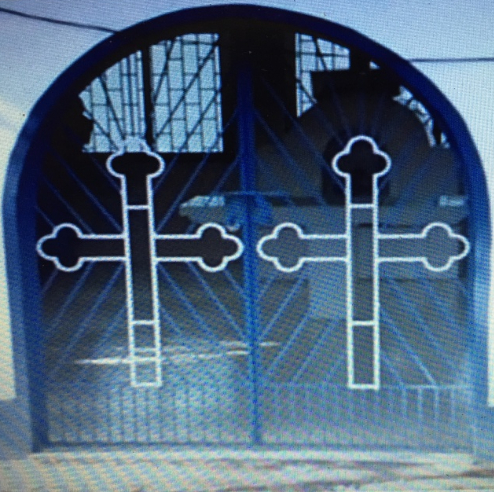Every October 28, people from different communities converge at a small chapel atop a hill in Goenchem Bhatt, not far from the St Francis Xavier Church in Velim-Salcete to celebrate the feast of the Matievoilo Rakhneacho Khuris that is famous for its miracles

Every October 28, people from different communities converge at a small chapel atop a hill in Goenchem Bhatt, not far from the St Francis Xavier Church in Velim-Salcete, which has an enclosed cross ‘Matievoilo Rakhneacho Khuris’ and is famous for its miracles.
Outside, a few yards from the chapel, is another small cross on a pedestal, where devotees from different faiths meet to pray for themselves, their loved ones, for favours and also light candles.
The first Mass at the ‘Matievoilo Rakhneacho Khuris’ was arranged by Dattaram Lotlikar of Baga-Velim in 1960, so states the plaque there, and since the last six decades, the feast of this Cross is celebrated annually by people of different faiths on October 28.
However, the feast was not celebrated on Wednesday due to the prevailing Covid-19 conditions in the State.
The foundation for the construction of 262 ‘Holy Cross Steps’ leading to the chapel was laid on October 18, 1998 by then parish priest Fr Santano Carvalho in the presence of the panchayat members and the government undertook this work under the EAS scheme.
THE ORIGIN
There are no written documents regarding the origin of this cross in Goenchem Bhatt. When enquired, the ‘elders’ of Velim village have an interesting story to narrate, which they themselves have heard from their ancestors. They also tell how they as children celebrated the feast of the cross.
In the days of old, the entire area up to the hill was a forest inhabited by wild animals. At the base of the hill were a few Catholic houses and among them were those of the Kunbi Catholic community.
There was a rough winding path leading atop the hill, which the gonvllis (shepherds) from this community used to take their sheep for grazing on the hill. They were afraid of their lives because of the presence of the wild animals, particularly the lion, which considered the territory as its own and would not tolerate any intruders.
So, they constructed a Cross on the hill with the available material there and prayed before it for their safety. With the Cross here, they felt safe and protected by God, hence the Cross came to be known as ‘Matievoilo Rakneacho Khuris’.
Later, others too made their way to the Cross and prayed for themselves and their families. Some miracles did take place but have not been reported. Soon, a feast of the Cross came to be celebrated there, with the involvement and contribution of every house in the village.
THE CELEBRATION
Traditionally on the feast day, almost every energetic person from the vaddo would go up the hill for religious ceremonies at the Cross and then descend down the hill to gather for a small celebration.
Prior to the feast, a small amount was collected by womenfolk to purchase ingredients required for the sweet dish and keep in a particular house.
On this day, they would prepare a sweet dish called ‘fir.’ As per custom, a portion of the dish along with the bottle of cashew feni would be kept at the entrance of the den of the lion in Goenchem Bhatt, probably to propitiate him. The sweet dish was then served to those attending the religious ceremonies and the remaining was served to villagers.
They would then carry red flags mounted on big sticks on a procession from Goenchem Bhatt up to a small field left of the panchayat house, which was filled with water and mount it in the middle.
During the procession, they would sing traditional songs accompanied by the brass band and with these, the celebrations would end. Over the years, visits became more regular and the Cross became famous in the area.
(The writer is former director of Thomas Stephens Konknni Kendr at Porvorim)